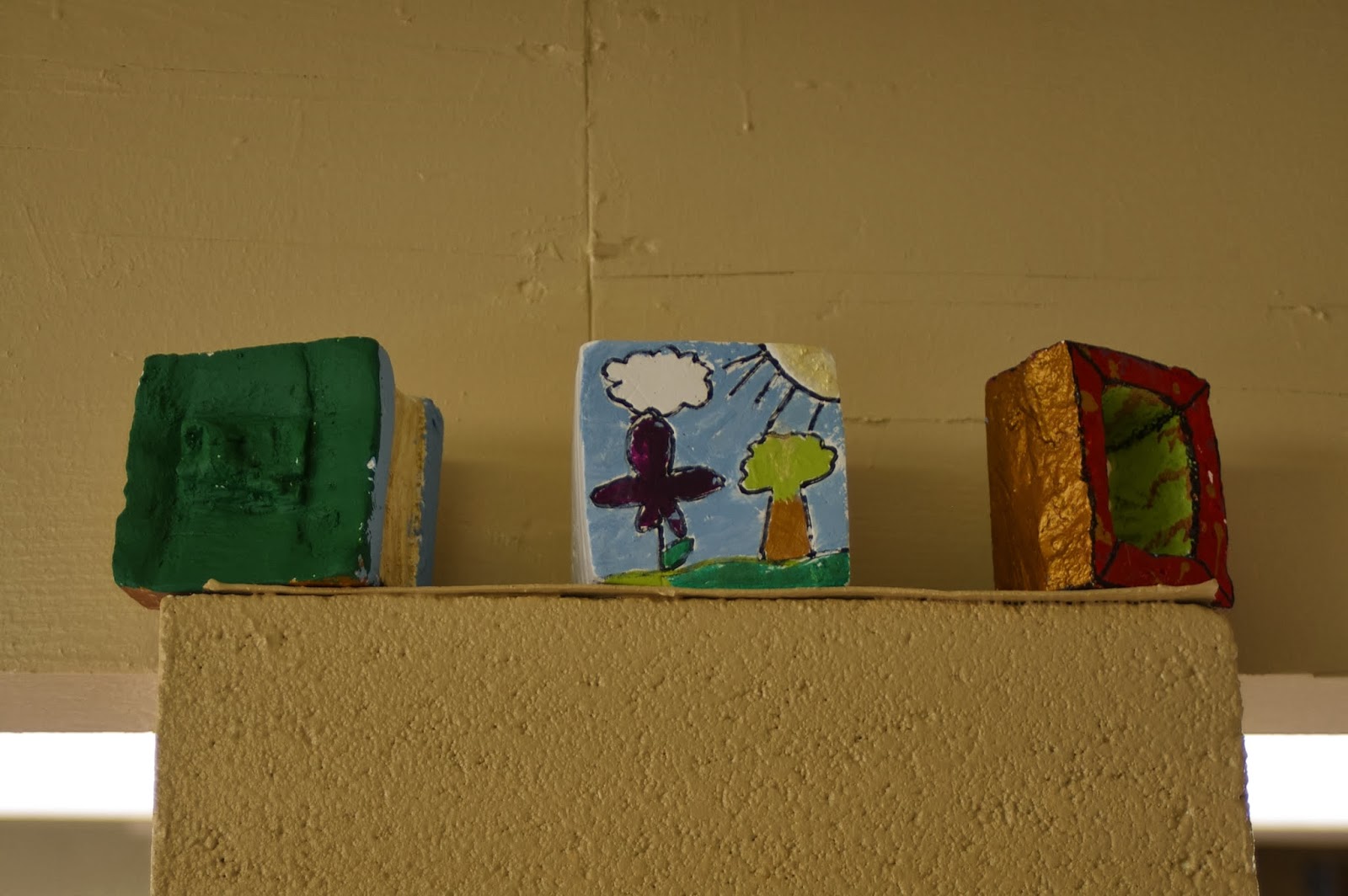Birds, whales, baboons, and cats sing, but do they find such music beautiful or compelling? Can it cheer them up, depress them, make them laugh or cry, or put them in just the right mood? Do they obsessively strive to improve their craft seeking ever greater beauty or perfection? Or is art intrinsically good to them because it adds beauty to an imperfect world?
Every culture everywhere has its history with art. Usually two- or three-dimensional depictions of nature can be found among the world's most ancient works of art. (No where in the animal kingdom can such artifacts be found.) Later depictions often contain spiritual representations, birth, death, fertility, or languages—all parts of many cultures' ancient arts: offerings to deities, warnings to the observer, fanciful handiwork of the bored, or factual depictions of the present.
So it's in our genes, I believe, to create and appreciate art.
My tastes are diverse: rock and roll and classical music (happy or relaxing); black and white photos with dynamic range (humorous or insightful); literature that is more real than real; humble, down-to-earth memoirs; artsy foreign films; and sculptures with visual puns.
But the real fun comes in creating.
I love playing guitar and singing (I've led worship in small-group settings), shooting black and white photos, sculpting clay, writing fiction and creative non-fiction, and on rare occasions, fooling with paints and permanent markers. Some of our best family outings have been to arts festivals—free to the public—at the Contemporary Art Museum, Honolulu Academy of Arts, Hawaii State Art Museum, and Windward Community College. They all put on good shows and allowed much hands-on participation and souvenir-making.
What sets activities apart at these are the artists who guide them, whose enthusiasms are palpable. I love to get them talking about the origination of their art forms, techniques, tools and materials, and their professional or academic statuses. It's also fun to let my creative side take over and see how my abstract scribbles turn out, or sculpt some mundane silly thing (tooth brush, toilet, a thumb) and see if the kids can guess what it is (they usually can't, even though it looks exactly like the object depicted—my wife can always tell). One thing that the kids got to do that I always wanted to (but adults weren't allow to) was spin clay. I later kiln-fired their bowls in town for a small fee, sprayed them with acrylic clear coats, let the kids decorate them with acrylic paints, then sprayed them with acrylic clear coats again—perfect gifts for the holidays. Another fun activity was carving wet plaster using wood carving tools. We ran out of time but were told how to finish them at home, which we did using blunt tools and knives, then painted with acrylics. Jaren, too young to carve, enjoyed gluing scrap wood blocks together, then painting them, instead.
As an art collector, I love originals. We can't afford expensive works, so usually it's through happenstance that I discover some affordable artist whose works I love. The first of these I discovered at my old apartment in Kakaako. Beautiful paintings were displayed in the lobby front office, propped upright on the floor against a desk front. I inquired about them and was told that the artists Cece and Fabio were tenants allowed to set up shop in a garage storage room. I went over and was immediately hooked—everything they produced, I appreciated (including painted flat board cut-out standing sculptures). I commissioned them to do a painting—anything they wished—for eighty dollars, and they did one on canvass, the wood frame of which was also painted and incorporated into the piece. I ended up buying four more pieces from their inventory (all sold at steep buyer-appreciation discounts), including one print which I gave to my brother, plus a number of postcard prints of originals.
The young Brazilian men with heavy Spanish accents were nascent artists striving to attain commercial success without “bastardizing their work.” One of them—handsome, studly, and full of fire—had paralysis from the waist down and got by with arm crutches. Their stories and our rapport and goodwill added substantially to my enjoyment of the pieces.
Another artist I came upon was Robert Kelsey, who displayed his works on Saturdays on the Fence by the Honolulu Zoo. His fine abstract acrylic paintings were on stretched canvass and extended all the way to the tops, sides, and bottoms—no frames required. A sign encourage customers, “Please DO touch the paintings.” I told Braden, then a toddler, “Look what the sign says.” An elderly gentleman with kind, gentle disposition approached, took a painting off the fence, stroked it, and held it for Braden to feel. The man joked about his wife from South-East Asia and explained how his mother-in-law, who was such an encouragement to him, gave him Chinese calligraphy brushes that he used in some of his paintings. She promised him that her daughter would take good care of him in his old age, so when his wife neglected him once when he had sore hands from stretching canvasses, he reminded her of her mom's promise to which she responded, “My mother was wrong!” Throughout the years, I purchased five pieces from him from twenty-five to thirty-five dollars each, two given away as gifts.
In acquiring art, I always seek the story—either of the artist or within the work itself. Yet, the main thing is always the way the work makes me feel. To paraphrase Duke Ellington, to me, if it feels good, it is good.
Whereas in creating art, the fun is in the doing. I don't teach my kids how to play guitar well or shoot compelling photos, instead, I just let them see me have fun doing it, show them the basics, then let them go and have some fun. If they enjoy it they'll stick with it longer and automatically improve over time. For a huge part of the fun in doing is improving.
Acquisitions:
Creations:







No comments:
Post a Comment